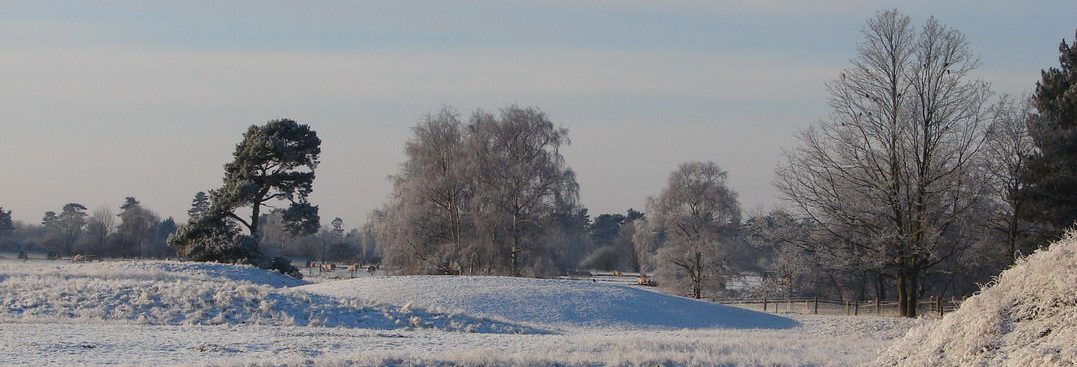The account of the hero’s funeral at the end of the epic of Beowulf reveals insights into the rite of mound-burial. In particular, the deliberately prominent siting of his mound overlooking a waterway seems to describe the heroic ideal which we find followed by the Wuffings at Sutton Hoo.
The Yngling kings of the Norse kingdom of Vestfold can also be seen to have followed this ideal with the siting of their royal burial mounds overlooking Oslo Fjord at Borre. In the picture below the Borre mounds are in the woods [author’s photo., June 1991]
The story of the death of Halfdan the Black, King of Vestfold and three surrounding territories during the ninth century, preserved in Snorre Sturlason’s great collection of sagas of the Norse Kings, Heimskringla, sheds further light on the beliefs associated with royal burial mounds.
King Halfdan died in a drowning accident some distance away from his home one spring. Snorre tells us that Halfdan’s reign had been greatly blessed by good harvests and that, as a result, the people loved him very much. When news of his death became known, the leading folk of his four territories went to meet Halfdan’s body. Each wishing to be able to bury the body it in their own district, for they believed that whoever got it would have better harvests. After some debate it was agreed to divide the body into four parts and to build a mound for King Halfdan in each of the four territories, so that all of them could expect good crops.
This story reveals something of the power with which certain royal mounds were held to be charged. In particular, it indicates that there was believed to be a direct correlation between royal burial-mounds and the fertility of the fields.
This is perhaps one of the reasons why burial mounds of successful kings like Rædwald are likely to have been venerated, as were the tombs of his Christian successors, like that of his nephew Onna at Blythburgh. Such veneration may also suggest why Mound One at Sutton Hoo was not burgled within a generation or so of its building, while people still remembered the royal funeral.
© Copyright Dr Sam Newton, Blotmonaþ AD 2000

